10 Resistant Starches That Lower Blood Sugar While You Eat
Carbohydrates don't have to be the thing you fear at the table. Resistant starch is a simple, evidence-based way to enjoy familiar carb foods while smoothing the rise of blood sugar after a meal. When certain starchy foods are cooked, chilled, and sometimes reheated, some of their starches rearrange into a form that resists digestion in the small intestine. This process, called starch retrogradation, slows how quickly glucose enters the bloodstream and can reduce post-meal spikes. Research summarized by Clemson University Extension notes that letting starchy dishes cool for 12–24 hours and reheating them to a safe internal temperature of 165°F before eating increases resistant starch and makes meals gentler on blood sugar. The list below pairs eleven practical foods with simple preparation ideas and tips you can use this week. You'll find naturally resistant options, like lentils and green bananas, alongside dishes you can make friendlier to your metabolism—think cooled rice or pasta salads. These approaches don't replace medical advice, but they do offer realistic, kitchen-based choices that help you keep carbs in the meal plan without losing enjoyment. As you try them, watch portions, pair carbs with protein and healthy fats, and consult your clinician if you use medication for blood sugar.
1. Cooled White Rice: Retrograded Rice for Smoother Glucose Rises

White rice is a mainstay at many meals, and it can be adapted to be more blood-sugar friendly with one small step: cook, chill, and then serve cooled or gently reheated. When rice cools for 12–24 hours, some of its digestible starch converts into resistant starch through retrogradation. This resistant starch passes farther down the gut before fermenting, which slows glucose release and often reduces the post-meal blood sugar peak that many people worry about. Clemson Extension highlights the 12–24 hour cooling window and recommends reheating to 165°F for safety if you prefer a warm dish. Try making a rice bowl the night before: cook normally, cool in the fridge, then top with beans, roasted vegetables, and a drizzle of olive oil. For a warm meal, reheat to the suggested temperature to ensure food safety. Keep portions sensible: even retrograded rice has calories and carbohydrates, so pair it with protein and healthy fats to further stabilize blood sugar. Individuals with diabetes should monitor their glucose to see the real-life effect, since everyone's response varies.
2. Cooked-and-Cooled Pasta: Pasta That’s Kinder to Your Blood Sugar

Pasta can behave similarly to rice: after cooking and cooling, some of the starch becomes resistant. The cooling period encourages structural changes that slow digestion, which often leads to a gentler rise in blood glucose after the meal. For best results, cook pasta to al dente, rinse to stop cooking, chill for at least 12 hours, and either serve cold as a pasta salad or reheat to 165°F before serving warm. This method keeps the chew and flavor you enjoy while reducing the speed of carbohydrate absorption. A practical idea is a Mediterranean-style pasta salad with chickpeas, tomatoes, spinach, and a lemon-olive oil dressing—adding protein and healthy fat to moderate the glycemic effect. Because portion sizes matter, aim for a reasonable serving of pasta (about a half to three-quarters cup cooked for many adults) alongside a generous portion of nonstarchy vegetables and lean protein. Trying this swap a couple of times a week can help you learn how your body responds without overhauling your favorite meals.
3. Cooled Potatoes: Make Mashed or Potato Salad That Slows Digestion
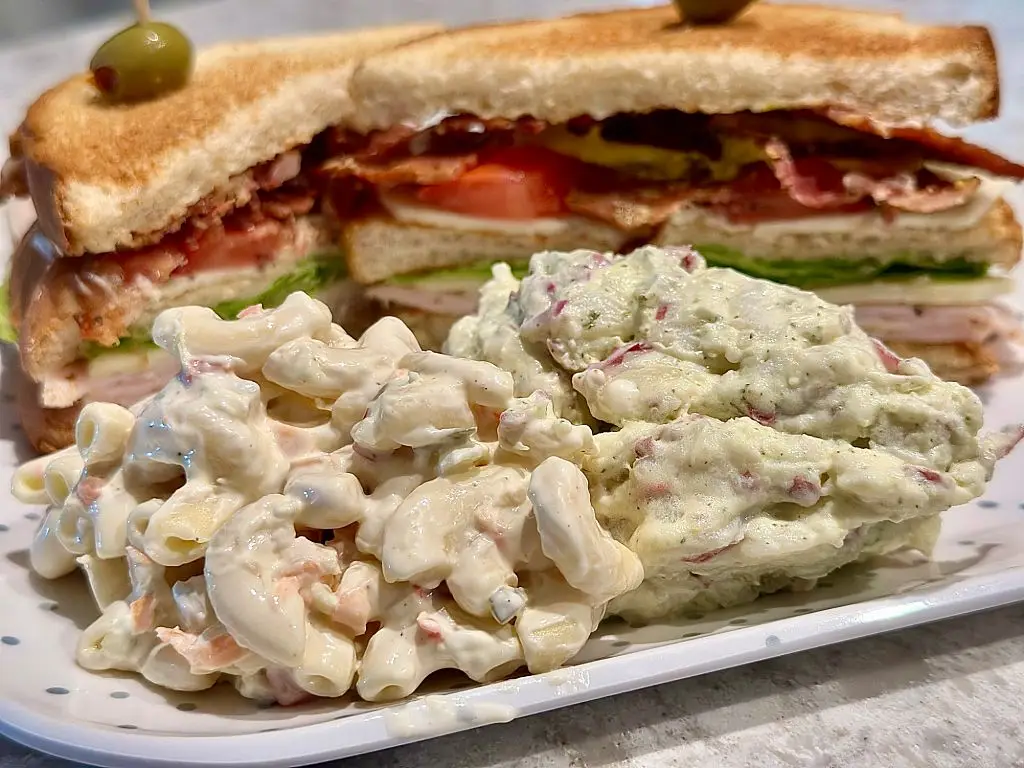
Potatoes are often lumped into high-glycemic foods, but cooling cooked potatoes turns some starch into resistant starch, which slows digestion and can blunt the immediate blood sugar rise. The key is the same retrogradation process: cook thoroughly, cool in the refrigerator for 12–24 hours, then serve chilled or gently reheat to 165°F when you want warmth. Potato salad with yogurt-based dressing or herb vinaigrette is a delicious way to enjoy cooled potatoes while adding protein and healthy fats that further slow glucose absorption. Be mindful of preparation details. Heavy mayonnaise and extra salt can make a side less healthy overall, so favor lighter dressings, herbs, and vinegar. Also watch portions—cooled potatoes still contain carbs—and pair them with a protein like smoked salmon, roasted chicken, or a bean salad to keep your meal blood-sugar friendly. If you use insulin or medications, check your glucose response when trying cooled potato dishes for the first time.
4. Lentils and Beans: Naturally Resistant, Fiber-Packed Choices
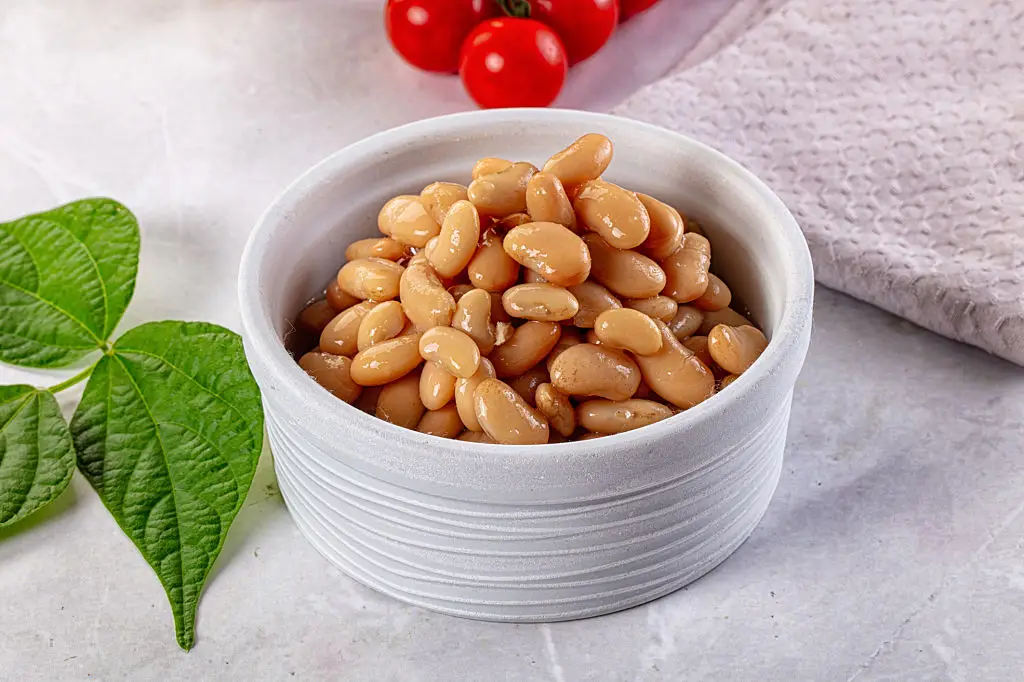
Legumes—lentils, chickpeas, black beans, and others—are naturally rich in fiber and contain types of starch that resist digestion. That combination slows carbohydrate absorption and often produces smaller post-meal glucose increases compared with refined starches. Unlike foods that require cooling to form resistant starch, legumes are naturally helpful straight from the pot, though cooling can add a little more resistant starch through retrogradation. Consumer Reports and other nutrition sources note that the benefits are especially noticeable for people with type 2 diabetes. Use lentils in warm bowls, cold salads, or blended into hearty soups. Canned beans are a convenient option—rinse them to reduce excess sodium—and cooked-from-dry beans have an even better texture and flavor control. Pairing legumes with whole grains or vegetables makes balanced meals that support steady energy. If you’re new to beans, increase serving sizes gradually to let your gut adapt to the extra fermentable fiber.
5. Unripe (Green) Bananas and Plantains: Fruit-Form Resistant Starch
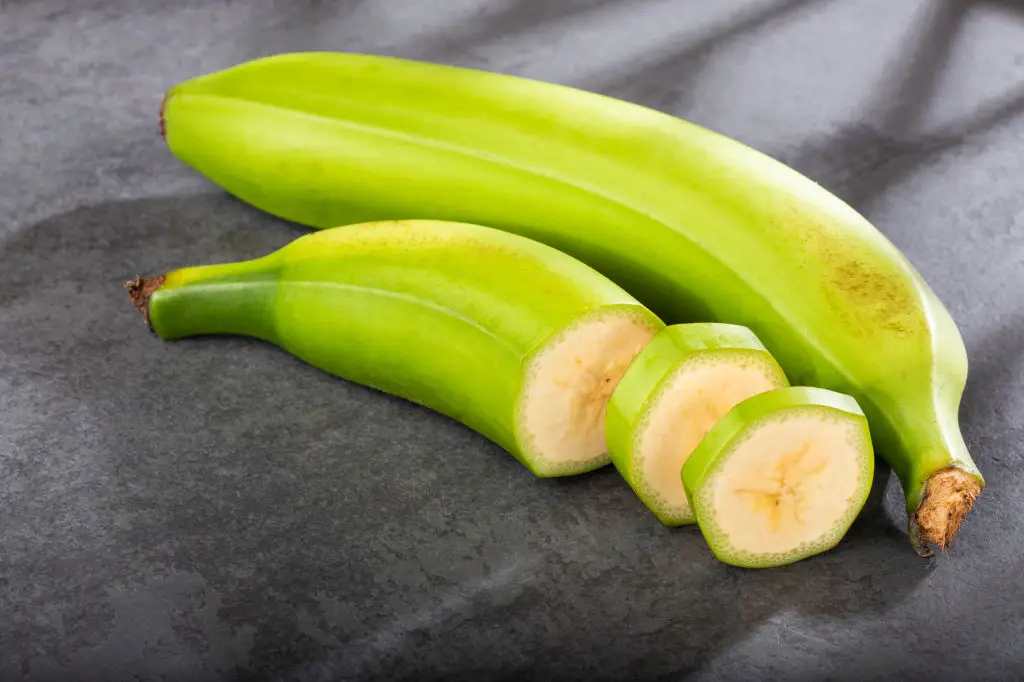
Green, unripe bananas and plantains are rich in resistant starch (type RS2) before they ripen. As the fruit ripens, that resistant starch converts to simple sugars, which raises the glycemic impact. Keeping bananas slightly green or using green plantain in cooking gives you a fruit that slows digestion more than a fully ripe banana. Culinary uses include thinly sliced green banana in a smoothie with protein powder, or cooked plantain cubes added to stews and salads. You can also find green banana flour as a baking ingredient, which keeps more resistant starch than regular banana flour. Taste and texture are different from ripe bananas—firmer and less sweet—so start with small amounts mixed into other foods. People who monitor blood sugar should track their responses, because even resistant-starch fruits add carbohydrates to a meal. Overall, green bananas and plantains are simple swaps to keep fruit in your diet while moderating glucose effects.
6. Overnight Oats (Cooled Oats): Breakfast That Steadies Morning Blood Sugar
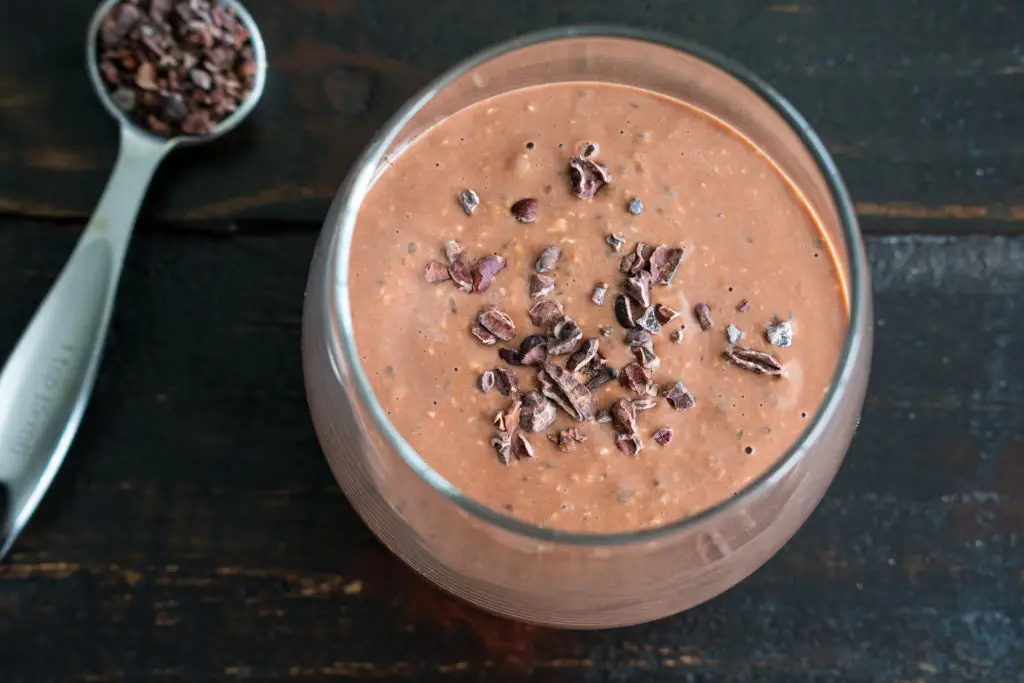
Oats can develop more resistant starch when cooked and cooled or simply soaked overnight, creating a breakfast that tends to release glucose more slowly than many typical morning carbs. Overnight oats combine rolled or quick oats with milk or yogurt and chill for several hours, which encourages structural changes and increases the proportion of starch that resists early digestion. Add-ins like chia seeds, nuts, and Greek yogurt boost protein and healthy fat, further stabilizing blood sugar. For a balanced bowl, mix half a cup of oats with a cup of milk or unsweetened yogurt, stir in berries and a tablespoon of chopped nuts, and refrigerate overnight. If you prefer warm oats, cook them, chill for at least 12 hours, and reheat to 165°F before eating to keep retrogradation benefits while ensuring food safety. This approach lets you keep breakfast simple, nutritious, and kinder to your glucose curve.
7. Cooked-and-Cooled Sweet Potatoes: A Sweeter Option That’s Gentler
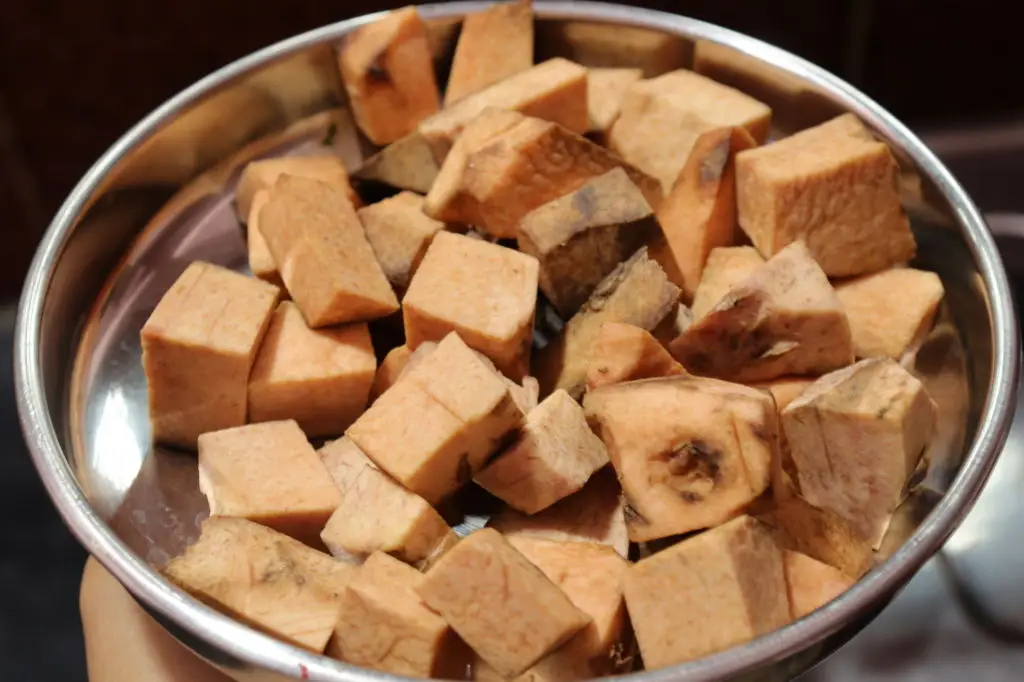
Sweet potatoes behave like other starchy tubers: after cooking and chilling, some starch converts to a resistant form that slows digestion. Sweet potatoes also bring vitamins, minerals, and fiber, making them a nutrient-dense choice. Prepare them by baking or boiling, cooling in the fridge for 12–24 hours, and serving chilled in salads or gently reheated to 165°F for a warm bowl. Pair cubes with a tahini dressing or add them to grain bowls with lean protein and leafy greens. As with other cooled starches, portion control matters—sweet potatoes contain natural sugars and calories—so balance your plate with vegetables and protein. This swap preserves the bright flavor of sweet potatoes while making their carbohydrates less likely to produce a fast glucose spike, which is helpful for sustained energy through the afternoon.
8. Barley and Hulled Grains: Whole Grains with Slower Carbohydrate Release

Barley and other hulled whole grains are naturally higher in both soluble fiber and forms of starch that slow digestion. Barley’s chewy texture and nutty flavor make it well-suited to salads and warm bowls. Cook a pot, cool it in the fridge to encourage any additional resistant starch formation, and use it in grain salads or as a rice substitute. The Harvard Nutrition Source emphasizes that whole grains and low-glycemic choices support blood sugar control and long-term metabolic health. Try a chilled barley salad with cucumbers, red onion, parsley, and a lemon-olive oil dressing, plus a can of rinsed chickpeas for protein. Because whole grains vary in their glycemic effects, pairing them with vegetables, protein, and healthy fats is a practical step to dampen any remaining glucose rise after a meal. Regular use of barley is a sustainable way to improve carb quality over time.
9. Corn (Cooked and Cooled): Corn Salad and Moderate Glucose Impact
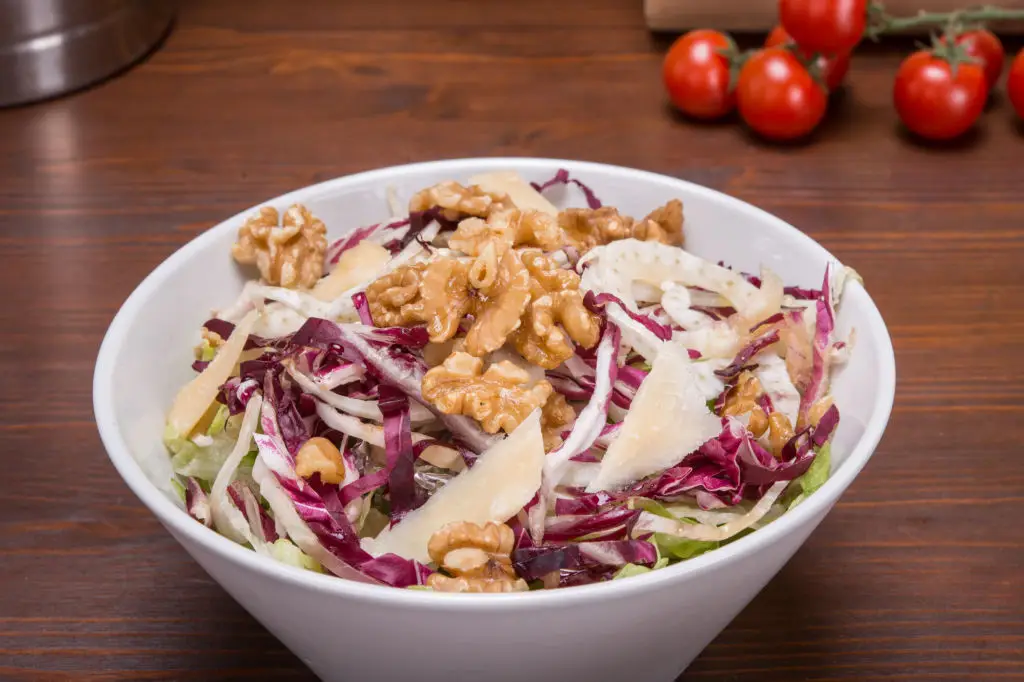
Corn develops some resistant starch after it’s cooked and cooled, which means warm corn dishes can be made friendlier to blood sugar by chilling and serving them in salads or salsas. Sweet corn pairs well with black beans, tomatoes, cilantro, and a squeeze of lime—ingredients that add fiber, protein, and flavor while limiting rapid glucose absorption. As a rule, combine cooled corn with a protein source and some healthy fat to reduce the net glycemic effect of the dish. Keep in mind that corn is still a source of starch and should be treated like other carbohydrates in portion planning. If you’re tracking blood sugar, try a portion of cooled corn salad and measure how your body reacts, then adjust serving sizes. Small, repeatable changes—like turning corn into a chilled side—can make everyday meals calmer for blood sugar without losing the foods you enjoy.
10. Raw Potato Starch (Supplemental): High-Resistant Starch Powder (Use Carefully)

Raw potato starch is a concentrated source of resistant starch (type RS2) and is sometimes used as a supplement to raise resistant starch intake. People mix a measured spoonful into cold yogurt, smoothies, or other chilled foods because heating can reduce some of its resistant properties. Small clinical studies and nutrition reports suggest that supplemental forms of resistant starch can modestly improve post-meal glucose responses and support gut fermentation. Use caution: raw potato starch is minimally processed but not sterile, and not all brands are equal. Start with a small dose and watch for digestive changes—extra fermentable starch can cause gas and bloating for some people at first. Also consult your healthcare provider if you take blood-sugar-lowering medications, since any change to carbohydrate handling could affect dosing. Sourcing a reputable brand and following product directions keeps this option safe and practical.
Wrap-Up: Make Resistant Starch Part of a Balanced Carb Strategy

Resistant starch offers a practical, food-first approach to making carbohydrates friendlier for blood sugar. Whether the source is naturally resistant, like lentils or green bananas, or enhanced in the kitchen through cooking and cooling, these foods help slow digestion and often reduce post-meal glucose spikes. The evidence summarized by trusted sources—Clemson Extension on starch retrogradation and nutrition authorities such as Harvard and Consumer Reports—supports the idea that simple preparation habits (cooling 12–24 hours and reheating to 165°F when desired) can make everyday dishes gentler on metabolism. This is not a quick fix or a replacement for medical care. Instead, think of resistant starch as another tool in a balanced plan: pair cooled grains or legumes with protein and healthy fats, watch portions, and keep the meals enjoyable. Try one change at a time—swap warm rice for a chilled rice bowl once a week, or add legumes to two dinners this month—and notice how your body responds. Small adjustments like these add up. If you take medication for diabetes, check with your clinician before making dietary changes so you can adjust therapy safely. Above all, choose the ideas that fit your life and taste, because sustainable habits are the ones you keep.